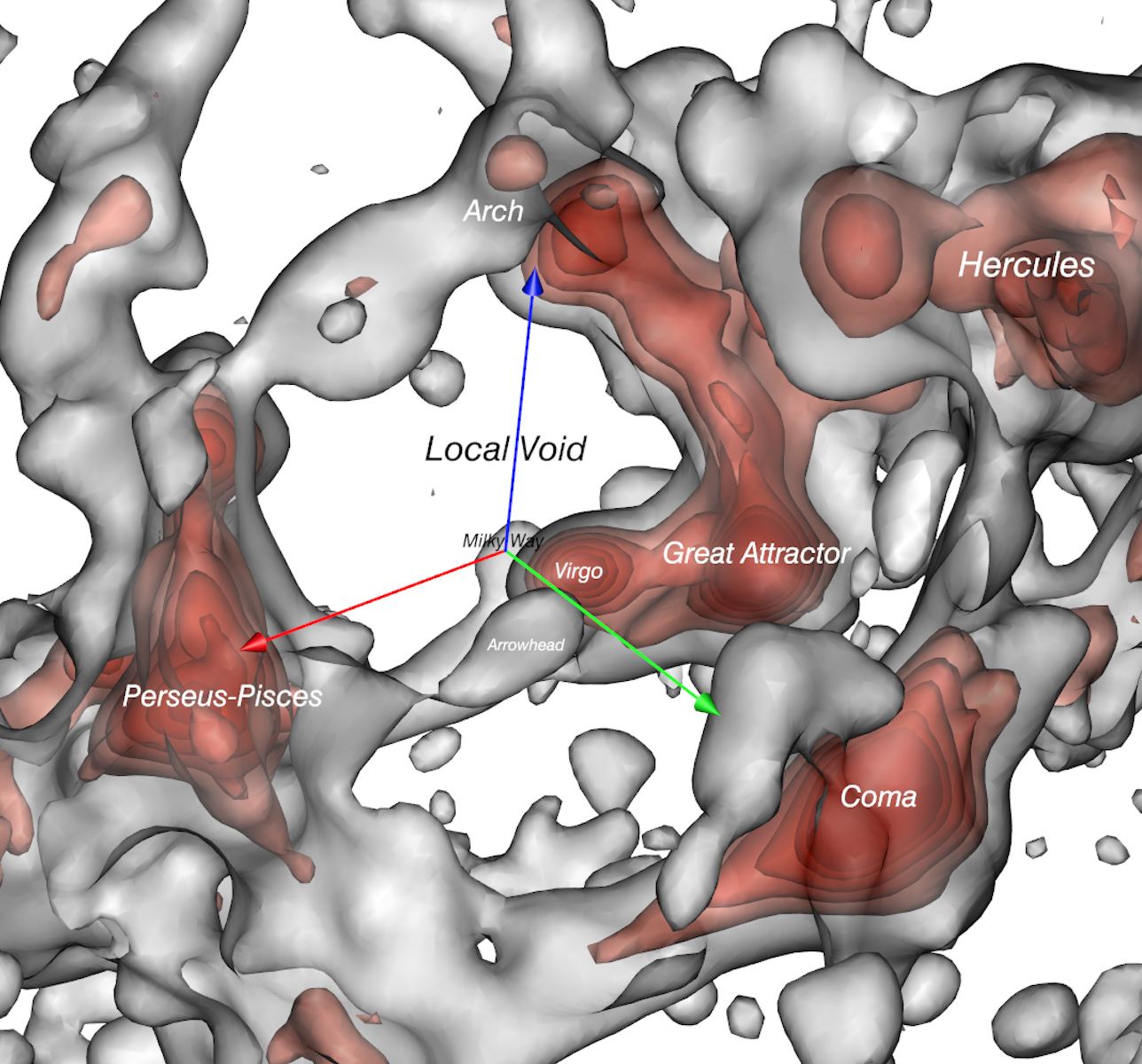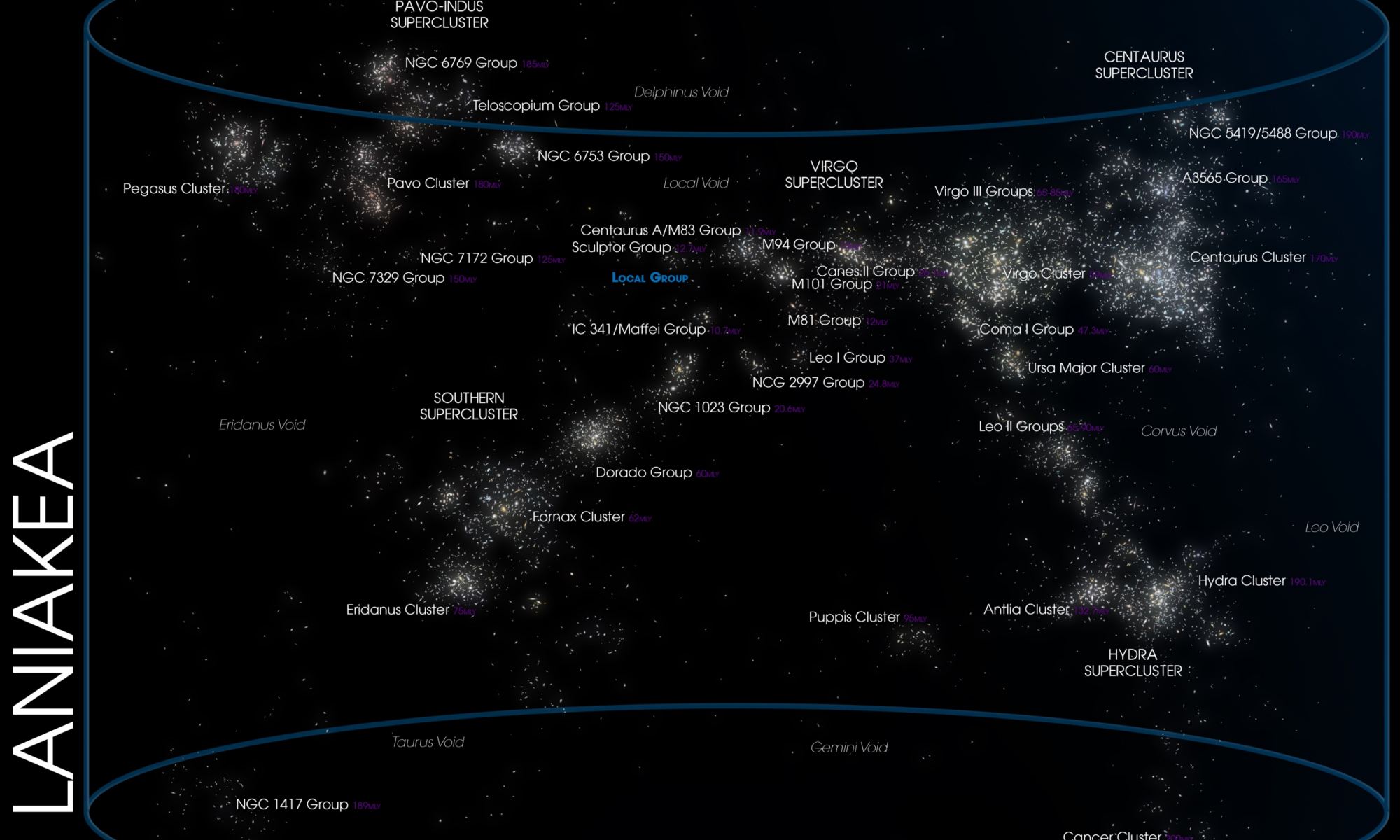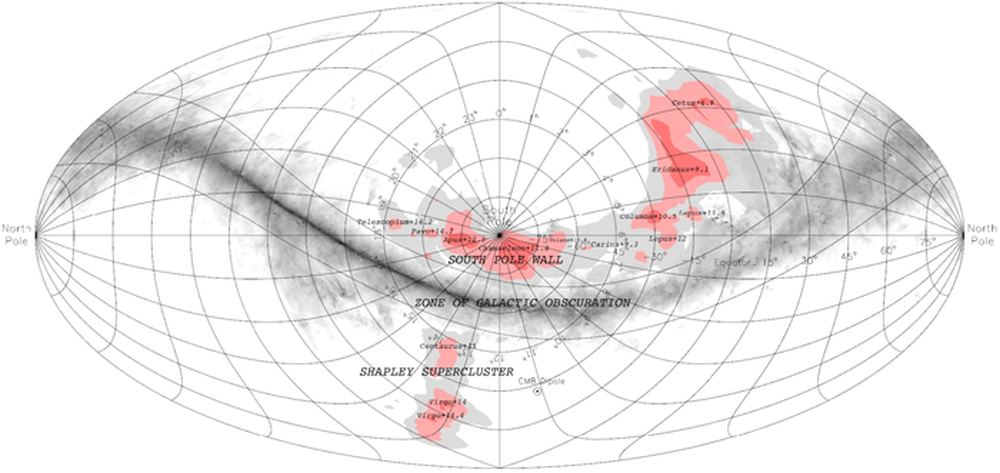One of the great unsolved mysteries of cosmology is known as the Hubble tension. It stems from our inability to pin down the precise rate of cosmic expansion. There are several ways to calculate this expansion, from observing distant supernovae to measuring the Doppler shift of maser light near supermassive black holes, and they all give slightly different results. Maybe we don’t fully understand the structure of the Universe, or maybe our view of the heavens is biased given that we are located deep within a galactic supercluster. As a new study shows, the bias problem is even worse than we thought.
Continue reading “If You Account for the Laniakea Supercluster, The Hubble Tension Might Be Even Larger”Astronomers Have Mapped Out an Enormous Structure in the Universe Called the South Pole Wall
Galaxies aren’t spread evenly throughout space. They exist in groups, clusters, and superclusters. Our own Milky Way galaxy exists in an impossibly vast structure called the Laniakea supercluster. Laniakea was defined in 2014, and it contains over 100,000 galaxies.
Now a team of astronomers have discovered another immense feature beyond Laniakea, called the South Pole Wall.
Continue reading “Astronomers Have Mapped Out an Enormous Structure in the Universe Called the South Pole Wall”Meet Our Neighbour, The Local Void. Gaze Into It, Puny Humans.

Our planet is part of the larger structure of the Solar System, shaped and made stable by the force of gravity. Our Solar System is gravitationally bound to the Milky Way galaxy, along with hundreds of millions of other solar systems. And our galaxy is also part of a larger structure, where not only gravity, but the expansion of the Universe, shapes and molds that structure. For regular Universe Today readers, none of that is news.
Now a new study sheds some light on a curious part of our cosmic neighbourhood, where there is basically nothing: The Local Void.
Continue reading “Meet Our Neighbour, The Local Void. Gaze Into It, Puny Humans.”

